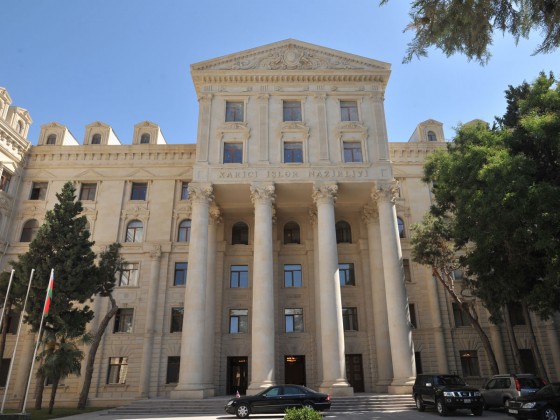
Armenia’s foreign minister once again distorted the essence of the process of the Nagorno-Karabakh conflict settlement, Hikmet Hajiyev, spokesperson for Azerbaijani Foreign Ministry, told Trend March 9.
He was commenting on an interview of the Armenian Foreign Minister Edward Nalbandian with Russian media.
“It seems Nalbandian has no idea about what is being discussed in the negotiation process,” Hajiyev added.
“Armenian foreign minister, who states that Yerevan is allegedly, committed to the conflict’s settlement with the mediation of the OSCE Minsk Group co-chairs, in fact, never finds the courage to refer to the updated Madrid principles, and it is no coincidence,” said the spokesperson.
It is necessary to remind Nalbandian that the OSCE Minsk Group co-chairs have presented the updated Madrid principles consisting of six paragraphs, according to Hajiyev.
He noted that the first paragraph of the updated Madrid principles, which is considered a "road map" for the staged settlement of the conflict, envisages the withdrawal of Armenian armed forces from the occupied Azerbaijani territories.
Instead of making expressions and statements on minor technical issues, Armenia’s foreign minister should clarify the issue of withdrawal of his country’s armed forces from Azerbaijan’s occupied lands as required by the corresponding resolutions of the UN Security Council and Madrid principles, said Hajiyev.
However, by keeping Azerbaijani lands under occupation, maintaining the status quo, carrying out illegal settlement, economic and other activities on the occupied territories, Armenia aims to continue the occupation of these territories by imitating the peace process, he added.
The spokesperson noted that in accordance with the updated Madrid principles, the OSCE Minsk Group co-chairs should demand Armenia to withdraw its forces from Azerbaijan’s occupied lands.
Only in this case, it is possible to achieve progress in the conflict’s settlement, Hajiyev concluded.
The conflict between the two South Caucasus countries began in 1988 when Armenia made territorial claims against Azerbaijan. As a result of the ensuing war, in 1992 Armenian armed forces occupied 20 percent of Azerbaijan, including the Nagorno-Karabakh region and seven surrounding districts.
The two countries signed a ceasefire agreement in 1994. The co-chairs of the OSCE Minsk Group, Russia, France and the US are currently holding peace negotiations. Armenia has not yet implemented the UN Security Council’s four resolutions on withdrawal of its armed forces from the Nagorno-Karabakh and the surrounding districts.
Trend
